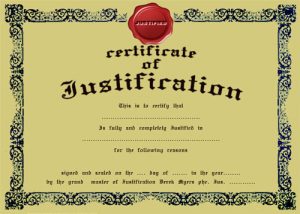You know, my partner Chris Huntley oft has said that the best way to rob a main character of motivation is to give him what he wants. If you fill his need, he has no reason to go off and try to do anything. Conversely, if you want to motivate a main character, take away something he wants. Steal his jewels, rip his heart out, put the love his life in danger, violate his morality, end his way of life. You pick it – you are the Author/God and the actions of your main character are pre-destined by the angst you give him.
Suppose you have a main character who’s problem is that he doesn’t want anything, doesn’t care about anything, and hasn’t had anything taken from him that he really cares about. This happens to authors far more often than you might imagine. So how to you solve this problem and get your main character moving?
All you need is one thing – one person or place or way of life that got under his skin, and somebody up and violated it. And now, though he is still just as cynical and jaded about everything else, he is in a blood rage because of that one thing and will go to the ends of the earth (or beyond, in some cases) to satisfy his lust for revenge or to try and save that which he holds so dear.
For example, Keanu Reeves as John Wick (great movie, by the way) is a retired assassin. His wife who drew him out of the business dies of natural causes. Before she died, she ordered a puppy to be sent to him after her death to remind him of her and give him something to love. And this incredible killing machine of a man, remains retired, and learns to love more deeply – until the son of a Russian Mob big wig kills his dog for the fun of it. In the end, everybody dies except for Wick who is now back in business.
The options are endless. Just pick one that is meaningful to you. Choose a loss or a threat to something loved by your main character that matches one for yourself, and you’ll find you have no trouble conveying why he is motivated to do whatever you want him to do.
Melanie Anne Phillips
Creator StoryWeaver
Co-creator Dramatica
I do personalized story coaching.


 Although a personal goal for each character is not absolutely essential, at some point your readers or audience is going to wonder what is driving each character to brave the trials and obstacles. If you haven’t supplied a believable motivation, it will stand out as a story hole.
Although a personal goal for each character is not absolutely essential, at some point your readers or audience is going to wonder what is driving each character to brave the trials and obstacles. If you haven’t supplied a believable motivation, it will stand out as a story hole.
 A story begins when the Main Character is stuck up in the highest level of justification. Nobody gets there because they are stupid or mean. They get there because their unique life experience has brought them repeated exposures to what appear to be real connections between things like, “One bad apple spoils the bunch” or “Where there’s smoke , there’s fire.”
A story begins when the Main Character is stuck up in the highest level of justification. Nobody gets there because they are stupid or mean. They get there because their unique life experience has brought them repeated exposures to what appear to be real connections between things like, “One bad apple spoils the bunch” or “Where there’s smoke , there’s fire.”